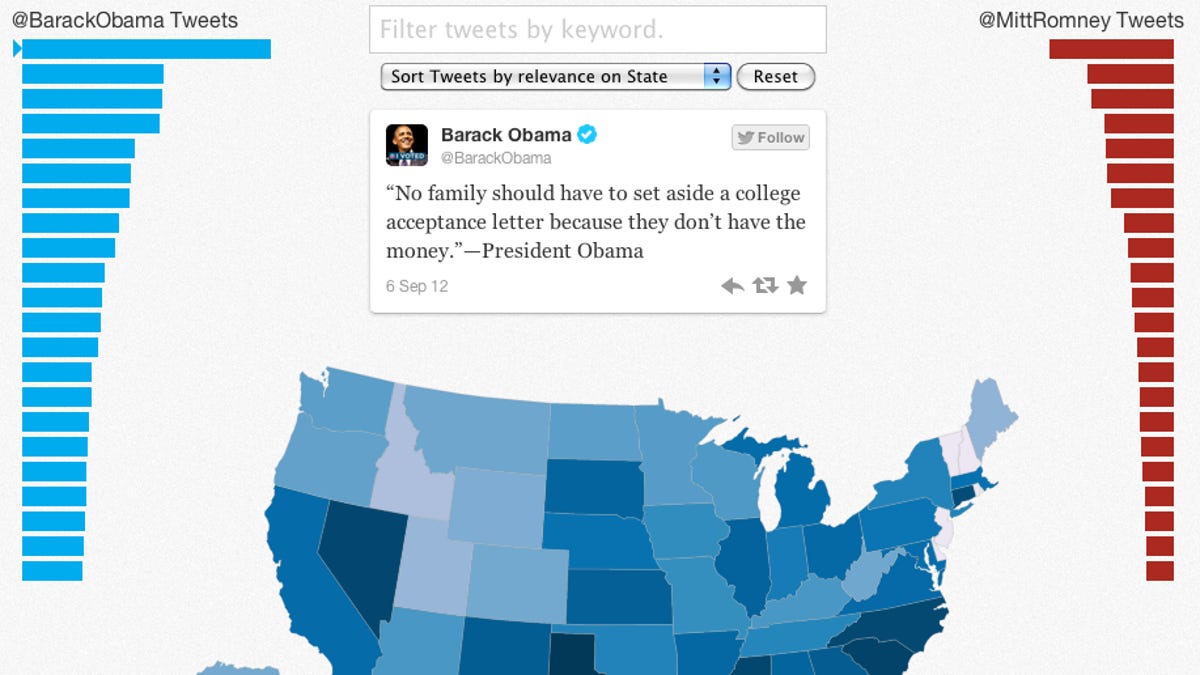Election Day on Twitter: Big volume, and service didn't crash
Tuesday was a record-setting day for Twitter, at least in terms of steady traffic around an election. Good news: The infrastructure didn't buckle.

Twitter came out with a bunch of stats for Election Day 2012 and boasted that amid a steady and fast stream of tweets, the service managed to keep going strong.
All told, people sent more than 31 million election-related Tweets, according to a blog post by VP of Infrastructure Mazen Rawashdeh called "Bolstering our infrastructure." He said Twitter tracked the surge in election-related tweets at 327,452 tweets per minute (TPM).
"These numbers reflect the largest election-related Twitter conversation during our 6 years of existence," he wrote, "though they don't capture the total volume of all Tweets yesterday."
What was key, said Rawashdeh, was not the volume but the way people used Twitter. While Twitter typically sees big spikes around certain events -- the clock striking midnight on New Year's Eve (6,939 Tweets per second, or TPS), the end of a soccer game (7,196 TPS), or Beyonce's pregnancy announcement (8,868 TPS) -- the Election Day traffic jumped and stayed there. Last night's stats: Twitter averaged about 9,965 TPS from 8:11 p.m. to 9:11 p.m. PT, with a one-second peak of 15,107 TPS at 8:20 p.m. PT and a one-minute peak of 874,560 TPM.
"Seeing a sustained peak over the course of an entire event is a change from the way people have previously turned to Twitter during live events," Rawashdeh wrote.
That's not entirely surprising, however, given the steady way election results come in. This was not, after all, New Year's Eve or Beyonce's pregnancy announcement. Instead, as Rawashdeh does point out, the traffic patterns were similar to what Twitter saw during the NBA Finals and the Olympics Closing Ceremonies.
In other words, Twitter has seen usage patterns like this before. What Rawashdeh is mainly pointing out, it seems, is that users can count on Twitter, which over the years has stumbled.
"Last night's numbers demonstrate that as Twitter usage patterns change, Twitter the service can remain resilient," he wrote. "Over time, we have been working to build an infrastructure that can withstand an ever-increasing load."

